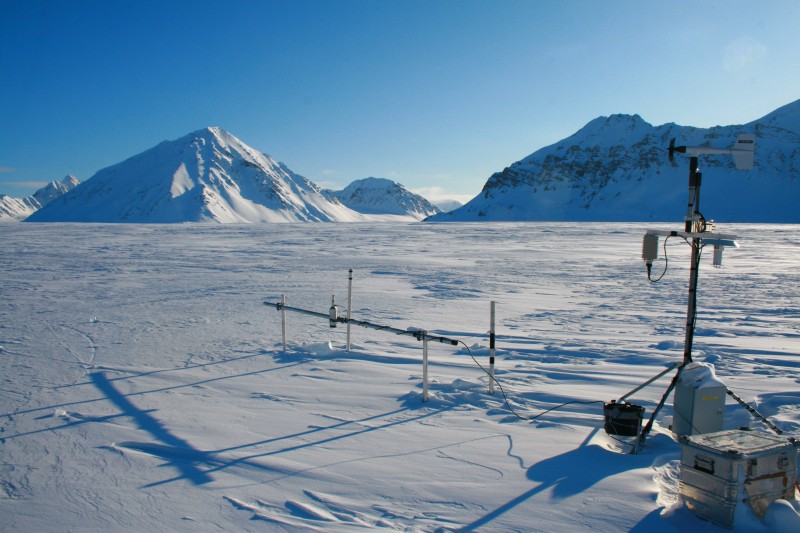CliWaC

Einstein Research Unit Climate and Water under Change (CliWaC)
The Einstein Research Unit Climate and Water under Change (CliWaC) is a transdisciplinary research initiative of the Berlin University Alliance to address water-related risks under climate change. CliWaC will bring together social and natural science as well as practical expertise from stakeholders to support the governance of mitigation and adaptation measures in response to climate change. [Link]
TEAMx

Multi-scale transport and exchange processes in the atmosphere over mountains – programme and experiment
Atmospheric processes specific to mountainous regions heavily affect the exchange of momentum, heat and mass between the Earth’s surface and the atmosphere. TEAMx is an international research programme that aims at improving our understanding of these processes. [Link]
Jostice

JOSTICE is funded by the Norwegian Research Council under the programme KLIMAFORSK. JOSTICE started on January 1, 2020, and is administrated by Western Norway University of Applied Sciences
The objective of the JOSTICE project is to assess the present and future changes in mass balance, runoff, ice volume and local climate of Jostedalsbreen, and determine the societal impact of these changes on hydropower production, tourism and agriculture. [Link]
HALJI - Glacial lake outburst floods in the Halji region, Nepal

DFG research grant
The Hindu Kush Himalaya (KHK) region in general, and Nepal in particular, are largely affected by glacial lake outburst floods (GLOFs). Many studies argue that the occurrence of GLOFs is, at least partly, linked to climate change and subsequent glacier retreat. The Halji village in north-western Nepal has been severely affected by six GLOFs since 2004. Based on previous studies and ongoing meteorological measurements by an automatic weather station on the Halji glacier from where the GLOFs have been released, the proposed project addresses three research questions: (1) Which topographic, atmospheric, cryospheric and hydrospheric preconditions and processes are leading to GLOFs on the Halji Glacier? (2) What determines temporal variability of GLOF occurrence in the Halji region? (3) How is GLOF occurrence in the Halji region linked to climate change in the KHK region? The three research questions shall be answered by new long-term data on atmospheric forcing and subsequent modelling of cryospheric and hydrospheric processes to obtain a better understanding of GLOF hazards and their spatial and temporal patterns. [Link]
Schism

Austrian FWF and the German DFG
In this project we combine the expertise of our team members from the Universities of Innsbruck, Erlangen-Nuremberg and Saskatchewan with the logistically suitable, data rich, and well equipped Hintereisferner in the Ötztal Alps, Austria, for developing and calibrating novel model tools that can push mass balance studies a large step forward in glaciology. In the end we aim to obtain an effective parameterization of snow drift, which will not only increase the process understanding of glacier-climate interactions, but also be available for future studies of glaciers in climatic settings around the world.
Manau

DFG research grant
This research project makes a contribution to the understanding of the interaction between dynamic processes and the spatial and temporal variability of precipitation in Patagonia. The aim of the project is the quantification of relevant processes, which provide new insights on relevant mechanisms on precipitation generation. Dynamic and thermodynamic flow properties are studied in detail by means of high-resolution numerical simulations. Simplified analytical models are further used to study the sensitivity of atmospheric perturbations on the precipitation distribution. The results obtained by this study provides valuable information for hydrological, glaciological and ecological topics.
Value Cost Action

EU Cost Action
The COST Action VALUE (2012-2015) will provide a European network to validate and develop downscaling methods and improve the collaboration between the dispersed research communities and with stakeholders. The Action will sytematically compare the different downscaling approaches and assess the aspects listed above. [Link]
Gis-Klischee

DFG research grant
The project GIS-Klischee has the target to estimate the local snow potential on the basis of measured and projected climate data, relief parameters, surface types, wind flow fields and radiation using satellite imagery. The impacts on winter sport tourism will be assessed on probable change scenarios precisely for an area, derived from regional climate model calculations. The inclusion of Geographic Information Systems (GIS) enables the integration of data in existing infrastructure, ecological precedence areas and economic parameters, so that an expert system, which can be used for spatial planning, is created. Investment decisions can be prepared and different adaptation strategies can be suggested depending on the modelled snow cover availability. [Link]
Transregional Collaborative Research Center 32 (TR32)

DFG research unit
The overall goal of TR32 is to clarify the origins of and the interrelations between spatial and temporal patterns of each single component within the soil-vegetation-atmosphere system using innovative monitoring and modelling approaches. Spatial and temporal structures of physical parameters (e.g., soil hydraulic conductivity), state variables (such as soil moisture or air temperature) and processes (for example fluxes of CO2, water and heat) can be observed on all scales. The detection of these patterns and the understanding of the interactions involved are required to represent the different spatial and temporal scales in numerical models. [Link]
WET

BMBF research grant
The project is part of the BMBF F&E (Bundesministerium für Bildung und Forschung, Forschung & Entwicklung) cooperative project: “Tibet and Central Asia: Monsoon Dynamics and Geo-Ecosystems” (CAME). This project investigates the coupling of climate and hydrological cycles on the example of benchmark drainage basins on the Tibetan Plateau and adjacent mountain ranges. The selected drainage basins are hydrological systems with glaciers, lakes, rivers and wetlands with characteristic structural properties for the Tibetan Plateau.
IPY Kinnvika and SvalGlac

European Science Foundation Project
SvalGlac – the European Science Foundation Project is one of the six proposals implemented within the European Polar Board programme – PolarCLIMATE. It is financed by the national funding agencies and some polar ones, also outside of Europe, as partners. Principal investigators and associated partners represent thirteen countries.
Main Project objectives spread on two PolarCLIMATE themes:
- Climate variability – Northern and Southern Hemisphere Oscillations, the scales and indicators of change and the forecasting of future threats and possibilities;
- The current status of snow and ice in the Polar Regions, the spatial distribution and magnitude of cryospheric stability.
[Link]
Konglaz

FWF grant
DynRG TiP

DFG grant
Gran Campo Nevado

The long-term Gran Campo Nevado Project investigates the spatial and temporal interactions of the climate and the local ice masses in southern Patagonia.
VATSS - Virtual Air Trafic System Simulation

Simulation of air traffic near airports with iterative coupled simulations of aircraft movements and environmental impacts. Visulisation and auralisation of simulation results by means of Virtual Reality. Boost-Fund-Project funded by the RWTH Aachen University [Link]